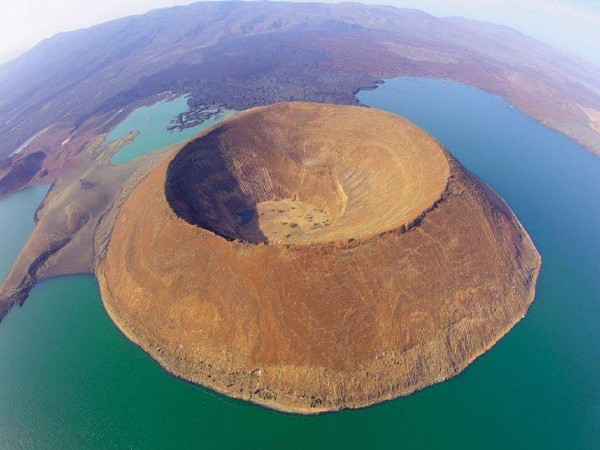Across the broad, flat surface of Lake Turkana, a 'river highway' snakes its way between silt banks so regular that they appear man-made. More than 3 miles (5km) from the lake shore, the highway ends in a dramatic, sprawling delta, shaped like the foot of a giant bird.
This is the end of its journey for the River Omo, which rises 400 miles (640km) away in Ethiopia. The river hurls itself southwards, through dramatic gorges and over waterfalls, until at last, it winds its way through rolling scrublands and dry bush to flood - sediments-laden and orangery-brown - into the brilliant green expanse of Lake Turkana in northern Kenya.

But the river water, laden though it is with silt and debris collected on its journey, is still lighter than the water of the lake, which is dense with dissolved volcanic deposits. So the fast-moving river water flows over the lake's surface, gradually slowing its pace and depositing its silt and debris. As it does so, it creates its banks. When its momentum at last expires, it spreads out to produce a delta and finally becomes one with the lake.
Lake Turkana, 195 miles (312km) long, is fed by several rivers but has no outlets. Long ago, when the rivers were much fuller, the level of the lake was probably about 600ft (180m) higher than it is now. It used to drain into the Nile through a gorge at its north-western end, but severe changes in the climate have lowered the water level, and the gorge is now completely dry.

Over the centuries, great quantities of ash and lava have erupted from the volcanoes which surround the lake, and have been washed into the water, building up thick deposits of mineral salts, including sodium carbonate, better known as washing soda.
Lying in the barren northwest of Kenya, right against the border with Ethiopia. Lake Turkana is so remote that only more adventurous travellers and dedicated anthropologists ever go there and share the experiences of the scattered tribes that live around it.
Their efforts are well rewarded because the lake supports a breathtaking array of Crocodiles, hippopotamuses and water birds.
About 12,000 crocodiles live in and around Lake Turkana. Although they are among the biggest in the world - up to 18ft (5.5m) long - they are not generally a threat to men and animals because they feed on the huge Nile perch which thrive in the lake. On a still night, a visitor standing by the water may hear the gnashing of great jaws, as the crocodiles work as a team to pen the fish against the shore, working slowly inwards and gorging as they go.

The main breeding ground of Lake Turkana's crocodiles in Central Island is a small cluster of Volcanic craters near the western shore. Here they have multiplied, almost unchanged for 130 million years. Crocodiles increase in size with age, and their large size and apparent docility may be due to a lack of predators combined with a good food supply. Perhaps as a result of the soda content of the water, they have horny nodules on their bellies so their skins are unsuitable for making into shores or handbags, which may have saved them from human attention.



 Click it and Unblock the Notifications
Click it and Unblock the Notifications





















